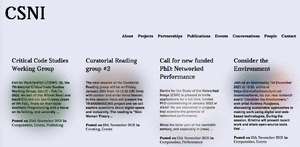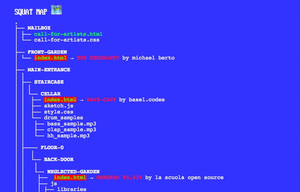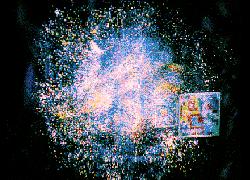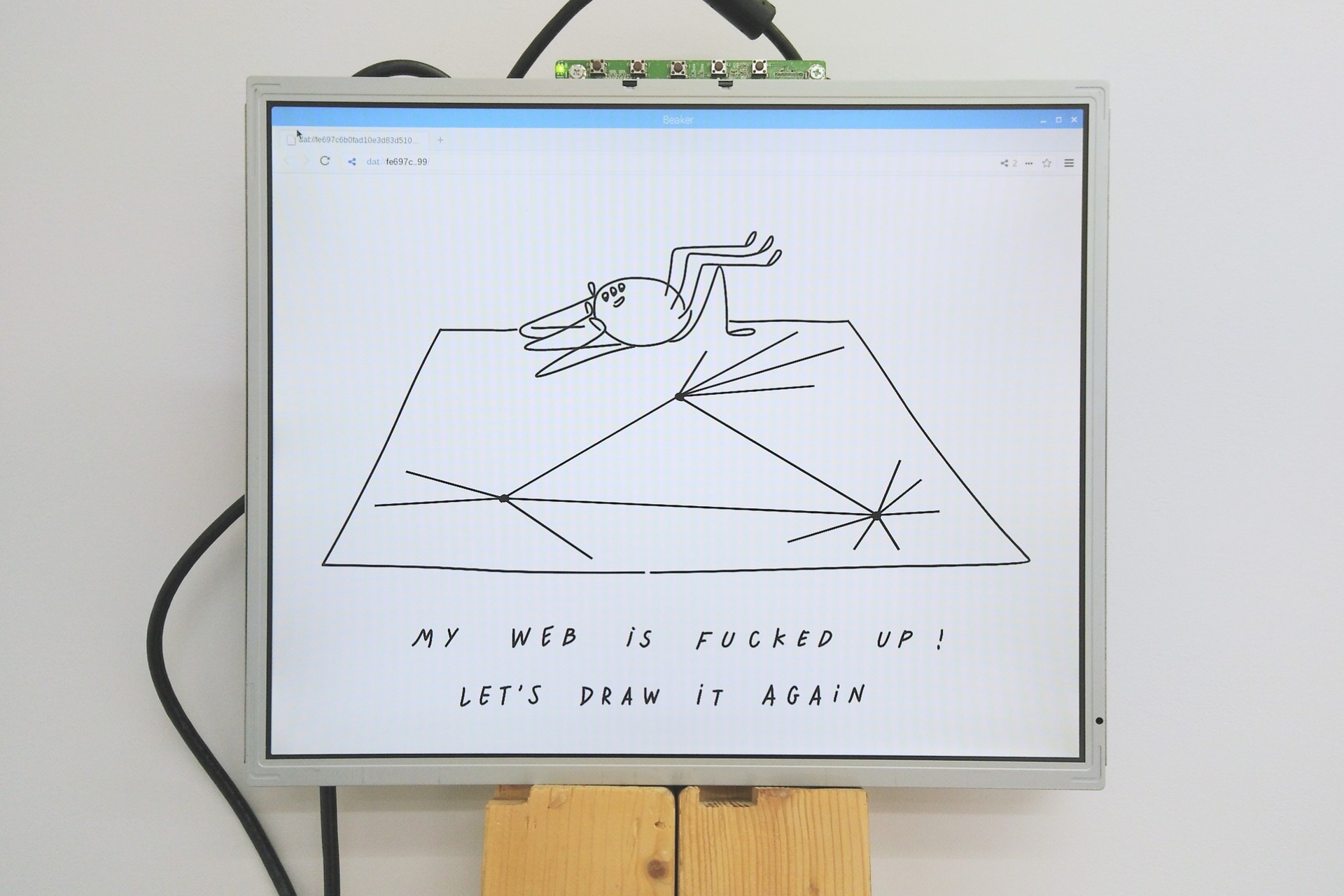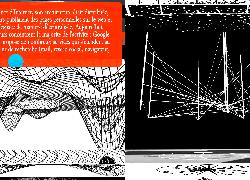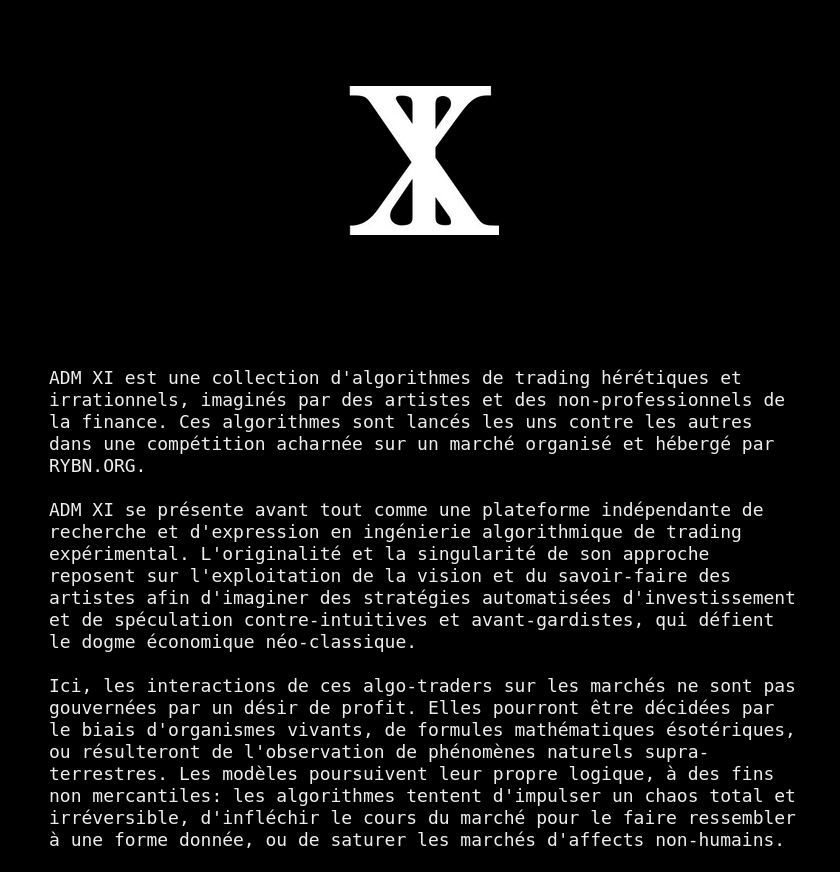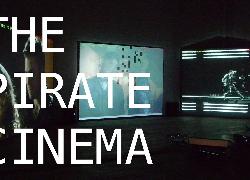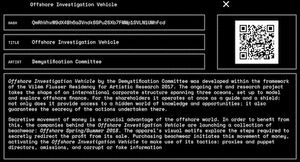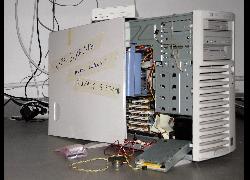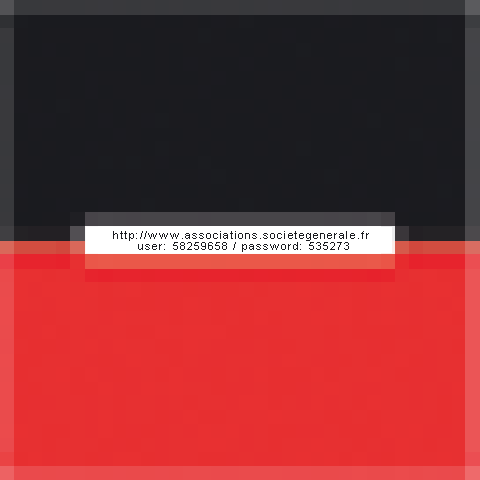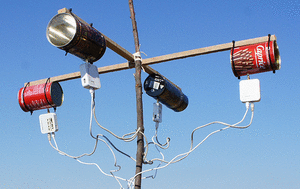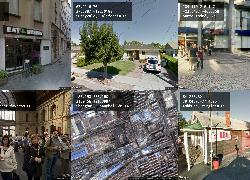Some cool titles :
NFTS and Photography
Rhizome ArtBase Relaunch
Alternative networks in Cuba
Book launch: Aesthetic Programming
Call for funded PhD: Networked Curating
The Environmental Impacts of Digital Cultural Production
Between Camera & Network: Art and Documentation in Post-Photographic Culture
via https://networkedart.blog/blog/2020/10/12/geoff-cox-the-museum-of-ordure-2001-onwards/
from https://liens.vincent-bonnefille.fr/?tIgT6g
Via the-museum-of-ordure
https://networkedart.blog/blog/2021/06/13/isea-workshop-blog-the-museum-of-ordure-by-bilyana-palankasova/
"Networked Art Practice after Digital Preservation”
The Museum of Ordure’s Mission is to examine:
The cultural value of ordure, shit, rubbish.
The waste of human resources through various ownership, production, and management regimes.
What is shit for some, has value for others.1
finded via https://liens.vincent-bonnefille.fr/?ZAgXwA
`-. U P E R cool folder-architectured co-www-exhibition index page ftp ( 2020 )
`-'
@the_wrong : digital art biennale https://thewrong.org
the squatted.online embassy reflects on the possibilities of squatting a digital space ♦ in the context of our exhibition, we try to look at the internet as an architectural space where each webpage is a building ♦
+>
https://squatted.online/squat/mailbox/call-for-artists.html : 2019 :
Back in 2003 , Steven Johnson [1] highlighted some of the major aspects of the internet by describing it as a city. Indeed, the web has been built and experienced by many people; wide participation has fueled its growth, yet this interconnection is cordoned into parts, each retaining its own independence.[...] For this reason, algorithms on social media, or any other kind of tracking algorithms, act as a reminder that the promise of a free internet has evolved into a powerful surveillance tool.
...
Edit javascript into a html page with `eval()`...
https://squatted.online/squat/main_entrance/staircase/meta-mezzanine/
Some strange blank pages with strange links in source code
An happy messy place
...
txt interessant sur le cyber-squatting, ses limites (et contradictions)
https://liens.vincent-bonnefille.fr/?QE9y1Q
---
Electro + eZine édition_zine
https://squatted.online/squat/main_entrance/staircase/floor_2/bedroom_1/drawer/index.html
via : https://www.are.na/minkyoung-kim/low-tech-network
"Le jeu défini par le Générateur poïétique* se déroule à l’intérieur d’une matrice à deux dimensions comme les jeux de tabliers et son principe s'inspire de celui du jeu_de_la_vie et des cadavres exquis des surréalistes. Le Générateur poïétique s’écarte néanmoins de ces modèles sur plusieurs points. Ce n'est pas un algorithme de type Conway, mais bien des joueurs humains qui contrôlent en temps réel les éléments graphiques de la matrice globale"
[...]
"L'appellation « Générateur poïétique », qui dérive du concept d'autopoïèse** en sciences du vivant, et de celui de poïétique* en philosophie de l'art, traduit le processus d’auto-organisation à l’œuvre dans l'émergence continue de l'image globale. Depuis son origine, le Générateur poïétique a été conçu par son auteur comme un élément d'une recherche-action*** [...]"
* https://fr.wikipedia.org/wiki/Poïétique
** https://fr.wikipedia.org/wiki/Autopoïèse
*** https://fr.wikipedia.org/wiki/Recherche-action
->> Recherche-action
"La recherche-action (ou recherche-intervention, ou encore recherche-expérimentation) est une démarche et une méthodologie de recherche scientifique qui vise à mener en parallèle et de manière intriquée l'acquisition de connaissances scientifiques et des actions concrètes et transformatrices sur le terrain."
----
::::: en image gif 2000 https://commons.wikimedia.org/wiki/File:Générateur_Poïétique._Enregistrment_d'une_expérience_sur_le_web,_festival_X-00_(2000).gif?uselang=fr
:::::: pour participer en ligne
http://play.poietic-generator.net/session/haccvalgrqdwiguo/draw
"LES RÉSEAUX CONSTITUENT LA STRUCTURE DE NOTRE SOCIÉTÉ ET LEUR NATURE DISSIMULÉE EN FONT DES SUJETS DE RECHERCHE RICHES ET FASCINANTS. NOUS NOUS CONSIDÉRONS COMME DES PORTRAITISTES DE CES OBJETS CONTEMPORAINS, RÉVÉLANT LEURS CARACTÉRISTIQUES POUR TENTER DE MIEUX LES COMPRENDRE".
Lire l'interview de Raphaël Bastide et Louise Drulhe par Daniela Baldelli de la galerie @Rinomina .
https://legacy.imal.org/fr/expo/waysofconnecting/renamingtheweb/interview
@Louise_Drulhe ..., 2015
"ADM XI se présente avant tout comme une plateforme indépendante de recherche et d'expression en ingénierie algorithmique de trading expérimental. L'originalité et la singularité de son approche reposent sur l'exploitation de la vision et du savoir-faire des artistes afin d'imaginer des stratégies automatisées d'investissement et de spéculation contre-intuitives et avant-gardistes, qui défient le dogme économique néo-classique."
2015
@Aram_Bartholl 2010
blog :
https://arambartholl.com/blog/dead-drops-preview/
map :
https://deaddrops.com/db/
"I am pleased to preview ‘Dead Drops’ a new project which I started off as part of my ongoing EYEBEAM residency in NYC the last couple weeks. ‘Dead Drops’ is an anonymous, offline, peer to peer file-sharing network in public space. I am ‘injecting’ USB flash drives into walls, buildings and curbs accessable to anybody in public space. You are invited to go to these places (so far 5 in NYC) to drop or find files on a dead drop. Plug your laptop to a wall, house or pole to share your favorite files and data. Each dead drop contains a readme.txt file explaining the project. ‘Dead Drops’ is still in progress, to be continued here and in more cities. Full documentation, movie, map and ‘How to make your own dead drop’ manual coming soon! Stay tuned."
"Biennale.py is a computer virus we created – with hackers group Epidemic – for the 49th Venice Biennale. Released on the night of the opening, it quickly spread around the world.
Immaterial and self-replicating, when the virus enters a computer it stays there, hidden, trying to survive for as long as possible."
2001
Parties
1 Any Browser ( www navigateur_browser )
2 Tor Browser ( dn_tor_onion #.onion )
3 Beaker Browser ( dn_dat )
1 = http://olia.lialina.work/self-portrait
2 = http://bn2lik7torbun6z2.onion
3 = hyper://a81117c7c60d9df7602ad62b265c6f7f034b40b17abbbcd7ab55dbb701fd2e7e/
@Olia_Lialina, 2018
UPDATE 2023
- exposition, supports audio, visite en 3D... @Espace_Mediagantner
https://www.espacemultimediagantner.cg90.net/fr/exposition/olia-lialina-something-for-everyone/
https://vimeo.com/466173173
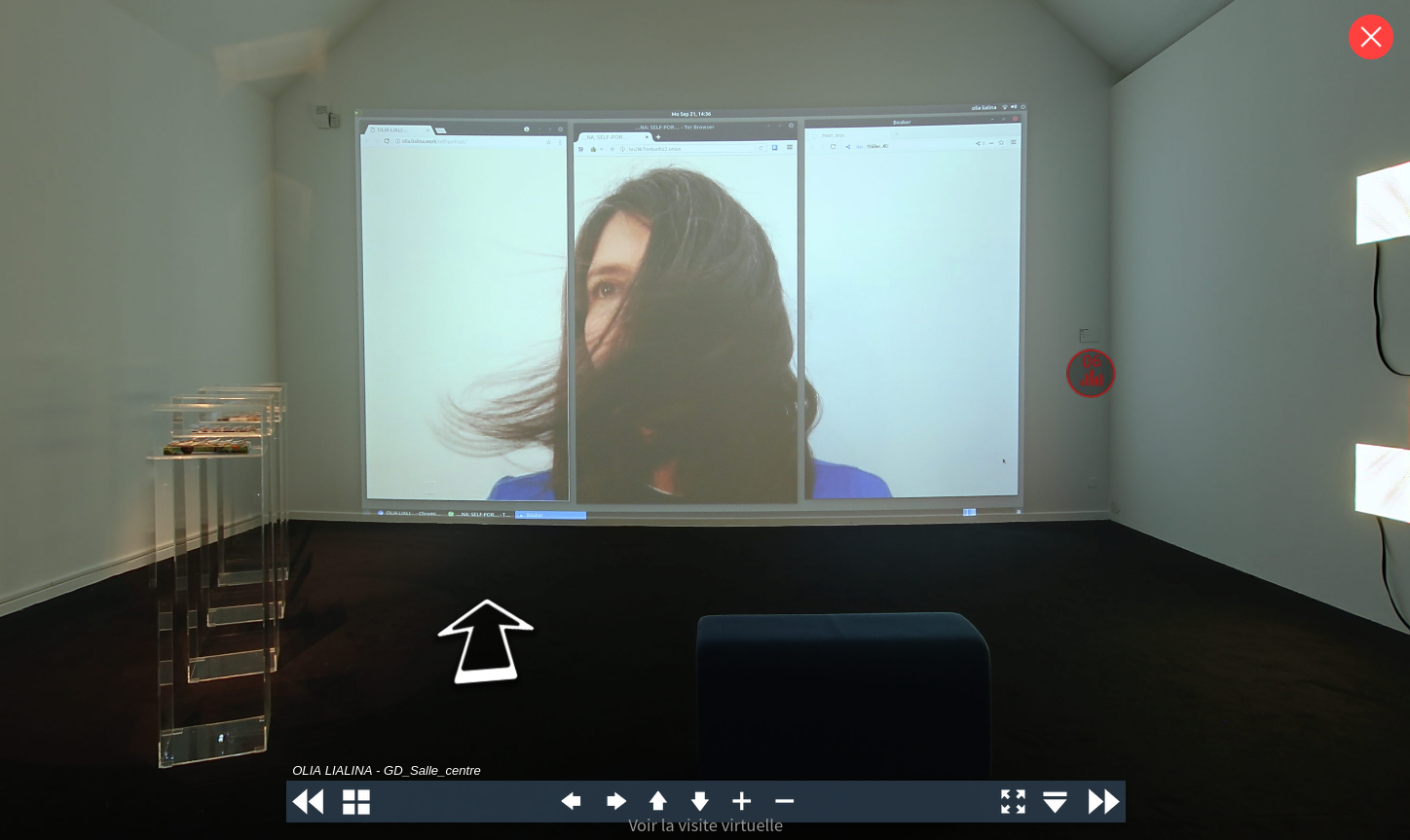
une présence sur d'autres réseaux, par d'autres protocoles
H3K (Basel) lui attribue un prix ...
https://www.hek.ch/fileadmin/hek_files/Presse/Press_release_net_based.pdf
"Winner of the net based award 2018 : @Olia_Lialina, "Self-Portrait"
With Self-Portrait, Olia Lialina continues her series of “networked” portraits, which explores the relationship between the work and its technological context, highlighting the ever-changing network conditions and our position within this one. After having played with variations in speed of transmission on the web (Summer, 2013 ) and having questioned the consequences of an abandonment of net neutrality (Best Effort Network, 2015 ), Olia Lialina invites us with her latest work to think of the web in its various dimensions, beyond its best-known public face. To contemplate this self-portrait, not less than three web browsers are required: a classic browser ( firefox , Chrome, Safari, etc.), an anonymised and secure browser (Tor) and a “peer-to-peer” browser (Beaker).
By juxtaposing these three windows open onto different parts of the network, we can recompose the fragmented face of the artist whose hair is blowing in the wind with ever so slight discrep-ancies in the movement"
" This video looks at one of the most popular projects that //!Mediengruppe_Bitnik has worked on with bots, the Random_Darknet_Shopper. The project investigates how these autonomous systems work within a network that offers anonymity. "
Site du projet
https://wwwwwwwwwwwwwwwwwwwwww.bitnik.org/r/
2014 2015 2016
CONF
Opera Calling / Delivery for Mr. Assange / Random Darknet Shopper
- https://vimeo.com/157831003
Delivery for Mr. Assange
=> https://liens.vincent-bonnefille.fr/?CqrZGQ
[ 01:50 ] Bot is crashing a lot => live desktop test
[ 41:50 ] Black --> Equador packet opening
BOOK / PUB
- https://wwwwwwwwwwwwwwwwwwwwww.bitnik.org/book/
- https://www.liberation.fr/culture/2015/01/19/le-random-darknet-shopper-un-robot-derriere-les-barreaux_1183963/
- https://aksioma.org/jon-lackman-random-darknet-shopper
- https://www.mastersandservers.org/projects/mediengruppe-bitnik-random-darknet-shopper/
- https://bib.vincent-bonnefille.fr/book/80
Expo / Buys
- The Lord of the Rings Collection
https://wwwwwwwwwwwwwwwwwwwwww.bitnik.org/r/004-lord-of-the-rings/ - Exhibition View - Kunst Halle St. Gallen
https://wwwwwwwwwwwwwwwwwwwwww.bitnik.org/r/kunsthalle-sg/ - Swiss Public Prosecutor seizes and seals work by !Mediengruppe Bitnik
https://wwwwwwwwwwwwwwwwwwwwww.bitnik.org/r/2015-01-15-statement/ - Ecstasy is Ecstasy
https://wwwwwwwwwwwwwwwwwwwwww.bitnik.org/r/2015-03-04-xtc-is-xtc/
Artists

"Robot" achetant aléatoirement des produits proposés sur le catalogue d'une plateforme d'achat-vente sur Internet via un protocole d'échange sécurisant et anonymisant son origine (( le tout à l'aide d'une crypto-monnaie décentralisée des banques-États )).
Original website http://www.no-home-like-place.com [DEAD]
--> Git https://nonlinearnarrative.github.io/no-home-like-place/
Airbnb is a global hotel filled with the same recurring items. Bed, chair, potted plant, all catered to our cosmopolitan sensibilities. We end up in a place that's completely interchangeable; a room is a room is a room.
An algorithm finds these recurring items and replaces them with the same items from other listings. By clicking them, you can jump between rooms and explore the global hotel. There are many homelike places.
Open-source
You can find the source code for the various tools we created and used to make this website on Github.
Workshop
Outcome of a week-long web scraping workshop led by Jonathan Puckey at Non-Linear Narrative, a masters programme at the Royal Academy of Art The Hague. "
GIT : https://github.com/nonlinearnarrative/no-home-like-place
GIT : https://github.com/nonlinearnarrative/scrape-airbnb ( scrape-airbnb )
Cours : Master @Non_Linear_Narrative :
https://www.kabk.nl/en/programmes/master/non-linear-narrative
( @Royal_academy_of_art_the_hague )
" Led by @Jonathan_Puckey " :
https://puckey.studio UX
( où il relate des projets aussi fun que pointer-pointer [Bulle] )
Je l'ai aussi retrouvé ici https://work.bnjmnearl.eu/projects/no-home-like-place/
( un site d'artiste web.créatif ... avec plein de projets fun )
Étrange de redécouvrir cet appartement infini en cette ère du covid
"On May 6 2010, high frequency trading robots has caused a 20 minute krach on the NYSE stock exchange, estimated 1000.000.000.000 USD loss. The raw data of the day, recorded from the 9 stock exchanges routed on the NYSE, offers the base of a sonification performance, broadcasted on nine speakers."
.dead http://glitch.refrag.paris
https://en.wikipedia.org/wiki/2010_flash_crash
https://www.youtube.com/watch?v=E1xqSZy9_4I ( <3 )
https://we-make-money-not-art.com/flash_crashes_glitches_in_the/
https://thepiratecinema.com #.dead
->> https://web.archive.org/web/20160220190259/http://thepiratecinema.com/
"A CINEMATIC COLLAGE GENERATED BY PEER-TO-PEER NETWORK ACTIVITY
- THE PIRATE CINEMA REVEALS PEER-TO-PEER INFORMATION FLOWS.
- THE PIRATE CINEMA IS A COMPOSITION GENERATED BY THE ACTIVITY ON FILE SHARING NETWORKS.
- THE PIRATE CINEMA IMMERSES THE VIEWER IN NETWORK FLOWS."
online :
The Pirate Book
à la //Kunst Halle St. Gallen 2014
"There is a parallel world beneath the surface of the Internet: the Darknet is an encrypted, invisible network that cannot be accessed by conventional browsers or search engines but is nevertheless used by millions. This digital territory is the impulse for cooperation between the artist collective !Mediengruppe Bitnik, the project :digital brainstorming from Migros-Kulturprozent and Kunst Halle Sankt Gallen."
« The Darknet –
From Memes to Onionland.
An Exploration »
In cooperation with !Mediengruppe Bitnik and :digital brainstorming
"Offshore Investigation Vehicle by the //Demystification_Committee was developed within the framework of the Vilém Flusser Residency for Artistic Research 2017 . The ongoing art and research project takes the shape of an international corporate structure spanning three oceans, set up to model and explore offshore finance. For the shareholders it operates at once as a guide and a shield: not only does it provide access to a hidden world of knowledge and opportunities; it also guarantees the secrecy of the actions undertaken there."
Index : https://nnn.freeport.global
EVA AND FRANCO MATTES
http://0100101110101101.org
2000 - 2003
Originally commissioned by the Walker Art Center and curated by Steve Dietz, Life Sharing by Eva and Franco Mattes (0100101110101101.org) was a radical gesture of self-surveillance. For three years, the couple made the contents of their home computer accessible to the public. All of the contents–including files, emails, bank statements, and so on–were available in real time to be read, copied, and downloaded.
>> http://lifesharing.rhizome.org/
J'aime beaucoup ce que nous raconte les artistes dans cette vidéo
Elle révelle surtout la géométrie variable avec laquelle les "Darknets" sont traité... ou plutôt le principe de l' obfu_secret fondamental aux banques et super-marchés connectés.
De tous ces espaces fermés, heureusement secrtes-privés...
ces réseaux réservés qui appartienet au DeepWeb parcequ'effectivement on ne peut les indexer, en tirer des données (au moins de la part de la concurence et certains bot_scraper ( on omet un peu vite les traitements de données internes aux entreprises qui voudraient faire fructifier les données dormantes ou darkdatas... ). Mais oui, en effet le bot de Gogle ne va pas où il veut et c'est bien comme ça.
Bon bin des fois l'errreurrr est humaine et les portes s'ouvrent...
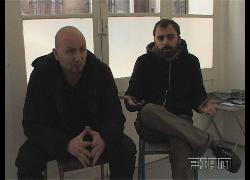
Que se passe t il quand on laisse les clefs de son compte banquaire à Internet ?
Quand on fait de cet espace symboliquement le plus privé et sécurisé, un espace de intrusion_vulnérabilité volontaire ? Un espace_public dans le cyber_espace ? C'est ce que nous racontent ces deux artistes.
@Ferenc_Gróf and @Jean-Baptiste_Naudy
installation pour les RIAM 06 à Marseille en 2009
http://www.riam.info/06/indexb379.html
alt.vidéo : https://www.youtube.com/watch?v=qF1qPgM-WUo
( leur site est .dead http://www.societerealiste.net )
"Can you hear me?"
Hello NSA , hello GCHQ. Berlin speaking here.
¥ Antennas on the Academy of Arts in Berlin
Messages can be sent to the intelligence agencies on the frequencies that are intercepted by the NSA and GCHQ. An independent mesh network in Berlin's Government District recaptured the virtual communication space. A collective conversation space in which all have equal rights has been taking the space of secret wiretapping.
http://www.statemachines.eu/projects/708/
http://www.statemachines.eu/projects/708/ =
AN ARCHEOLOGY OF SILENCE IN THE DIGITAL AGE
“I have not tried to write the history of that language (A/N the language of psychiatry) but, rather, the archeology of that silence.”
M. Foucault, Madness and Civilization, 1961
Artists @Christoph_Wachter and @Mathias_Jud have been paying special attention to the different forms of silence that prevail on the Internet. With their work, they aim to undermine power structures while also developing tools and systems of communication for those in need. They uncover network mechanisms, expose cases of censorship and surveillance, and embrace infrastructural literacy as a response to the dominance of today’s network ( 2017 )
Via https://www.wachter-jud.net/Can-you-hear-me.html?r9t_locale=en
Au programme de @State_Machines ( thématique_revue ) ...
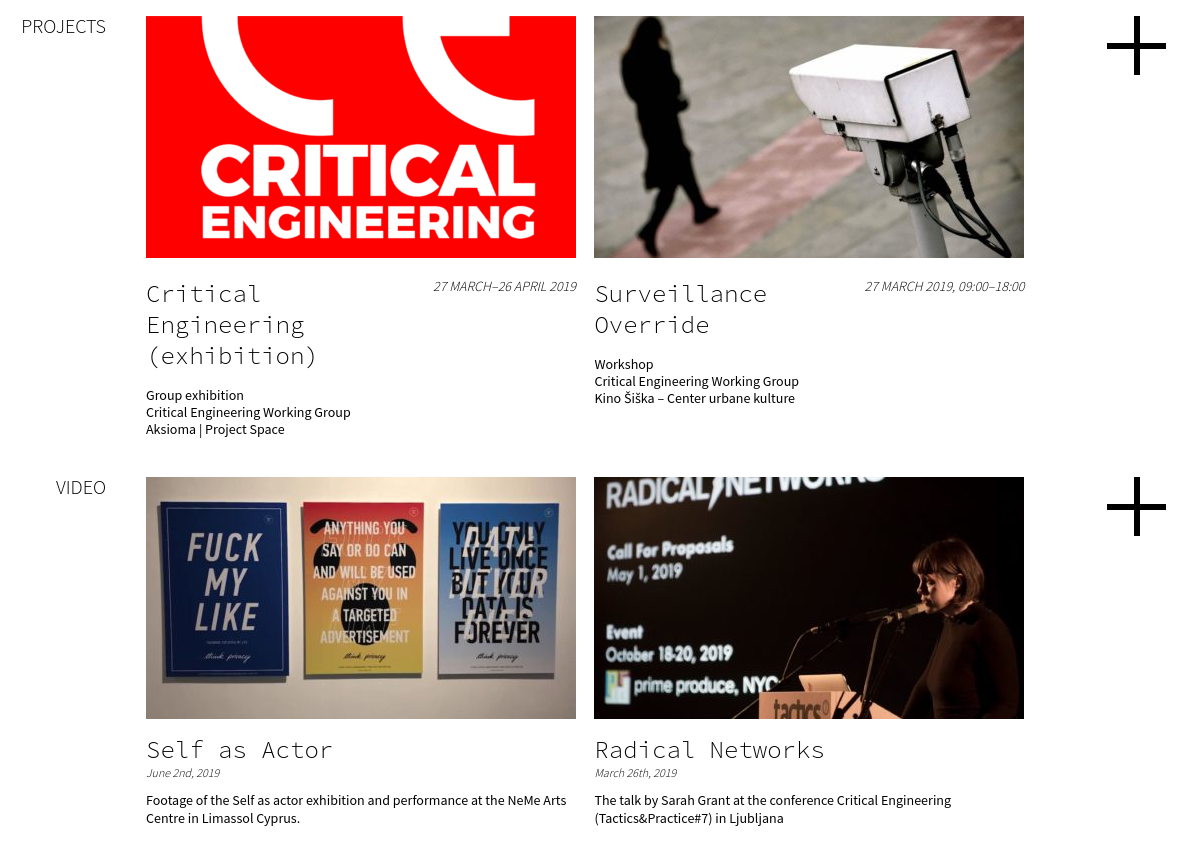
0n retrouve : @The_Critical_Engineering_Working_Group et @Aksioma #<3
par Ben_Grosser 2015
computational surveillance system
Tracing You presents a website's best attempt to see the world from its visitors' viewpoints. By cross referencing visitor IP addresses with available online data sources, the system traces each visitor back through the network to its possible origin. The end of that trace is the closest available image that potentially shows the visitor's physical environment. Sometimes what this image shows is eerily accurate; other times it is wildly dislocated. What can a computational system know of our environment based on the traces we leave behind? Why might it want to see where we are?
